Observation: Komplettlösung: Tipps & Tricks — so löst ihr alle Rätsel!
In dieser Observation Komplettlösung erhaltet ihr Hilfe sowie Tipps und Tricks zu allen Rätseln. So findet ihr den Weg durch die Raumstation.
Eure erste Aufgabe ist simpel: Ihr sollt die Stimme von Emma Fisher bestätigen oder verweigern. Es macht für die Geschichte keinen großen Unterschied, wie ihr euch entscheidet. Danach müsst ihr Emma antworten, damit sie weiß, dass ihr „funktioniert“.
Im nächsten Schritt sollt ihr das Modul EAS-09 überprüfen. Wählt es im folgenden Bildschirm an und gebt Emma die Daten bezüglich Druck (Pressure) und Rumpfkontakte (Hull Contacts) durch. Sie möchte anschließend den Zustand der Rumpfkontakte in den anderen Stationen wissen. Es reicht aus, wenn ihr von dem Defekt im Modul EAS-10 berichtet.
Bevor ihr weiteren Anweisungen folgen könnte, werden plötzlich ein paar Koordinaten und die Aufforderung Bring sie (Bring her) eingeblendet. Ihr müsst letztere bestätigen, damit ihr wieder mit Emma reden könnt. Die verlangt von euch eine sofortige Selbstdiagnose, die ihr sogleich durchführt. Dazu müsst ihr nacheinander euer Netzwerk (Network), euren Speicher (Memory Core) und den Besatzungspeilsender (Crew Tracker) überprüfen. Ihr erhaltet in allen drei Fällen Fehlermeldungen, die ihr jeweils Emma übermittelt.
Emma verbindet euch nun mit den Kameras in EAS-09. Dort sollt ihr zunächst ein paar Tests durchführen und in dem Zusammenhang die Steuerung für das Bewegen, das Zoomen sowie das Wechseln zwischen den Kameras erlernen.
Ihr erhaltet sogleich eine weitere Instruktion, demnach ihr das Dokument System Link Reset suchen sollt. Dafür schaut ihr am besten durch Kamera B und ortet an der blauen Wand die Sphere Modification Bay. Direkt darüber hängt das besagte Dokument, das ihr euch sogleich anschaut. Kleiner Tipp: Um die Ansicht zu verlassen müsst ihr (bei voreingestellter Steuerung) die Delete- und nicht die X-Taste drücken! Das zugehörige Icon sieht nämlich etwas missverständlich aus.
Nun müsst ihr die drei Luken öffnen, die es in EAS-09 gibt. Jene zu EAS-08 seht ihr ebenfalls durch Kamera B, während ihr die Luken für EAS-10 und EAS-11 am besten via Kamera C betrachtet. Neben ihnen hängt jeweils ein gut sichtbarer Kasten mit einem grünen Licht. Wenn ihr nahe genug heranzoomt, dann könnt ihr die Kasten benutzen und so die Luken öffnen.
Sobald die Luke zu EAS-11 offen ist, schwebt Emma zu euch.
Das Feuer in EAS-04 löschen
Nach einem kurzen Monolog ertönt plötzlich ein Alarm und ihr erhaltet Zugang zum SamOS, das ihr euch sogleich einmal anschaut. Euch steht eine kleine Karte zur Verfügung, dank der ihr zu den Kameras der anderen Module wechseln könnt. Schaut euch eines nach dem anderen an, bis ihr in EAS-04 ein Feuer entdeckt. Ihr seht es am besten via Kamera C und müsst sogleich Emma davon berichten.
Emma macht sich sogleich auf den Weg, bis sie EAS-06 erreicht. Dort kommt sie leider nicht weiter, weil die Luke zu EAS-05 verschlossen ist und sich nur von der anderen Seite öffnen lässt. Doch zum Glück könnt ihr zu den Kameras in EAS-05 wechseln und Emma helfen.
Dort kommt sie leider nicht weiter, weil die Luke zu EAS-05 verschlossen ist und sich nur von der anderen Seite öffnen lässt. Doch zum Glück könnt ihr zu den Kameras in EAS-05 wechseln und Emma helfen.
Springt zu Kamera B und dreht sie etwas nach rechts und etwas nach oben, bis ihr von Weitem ein grünes Licht seht. Dabei handelt es sich um den Kasten, mit dem ihr wie schon mehrfach erprobt die Luke zu EAS-06 öffnet. Ihr müsst jedoch ganz nahe heran zoomen, bevor ihr den Befehl ausführen könnt.
Emma begibt sich geradewegs nach EAS-03 und schwebt vor die verschlossene Luke von EAS-04. Ihr sollt zu eben diesem Modul wechseln und euch durch Kamera C mit dem Kasten der Luke verbinden. Öffnet sie jedoch erst, wenn Emma bis drei gezählt hat.
Sobald das Feuer gelöscht ist, müsst ihr den Rauch ablassen beziehungsweise das Modul entlüften. Dreht hierfür Kamera C ganz nach links und schaut euch die schwarzen Entlüftungsöffnungen (Extractor Vents) an der Wand an. Schaltet sie an und schaut euch auf Wunsch von Emma nochmal den Bereich an, der eben in Flammen stand. Auf die Frage hin, was die Ursache für das Feuer gewesen sein könnte, verweist ihr auf das LFE 1 Panel direkt links neben dem Bereich.
Schaltet sie an und schaut euch auf Wunsch von Emma nochmal den Bereich an, der eben in Flammen stand. Auf die Frage hin, was die Ursache für das Feuer gewesen sein könnte, verweist ihr auf das LFE 1 Panel direkt links neben dem Bereich.
Kurz darauf ertönt wieder der Alarm, weshalb Emma einen Statusreport verlangt. Demnach ist Modul EAS-12 stark beschädigt und muss von der Station getrennt werden.
Das Modul EAS-12 abtrennen
Das Abtrennen von EAS-12 ist recht einfach, wenn auch etwas hektisch: Ihr folgt Emma automatisch zu einer Konsole und müsst auf ihr Kommando hin den Autorisierungscode eingeben. Achtung: Sie spricht recht schnell, weshalb ihr nicht zögern dürft. Der Code lautet 1442413324.
Danach sollt ihr die Klammern (Clamps) lösen, indem ihr die acht auf dem Bildschirm angezeigten Düsen (Jets) in der korrekten Reihenfolge aktiviert. Auch hier ist Eile angesagt, weil euch für jede Düse nur zwei Sekunden Reaktionszeit zur Verfügung stehen. Die Reihenfolge lautet: rechts, links, oben, unten, oben links, unten rechts, unten links und oben rechts.
Die Reihenfolge lautet: rechts, links, oben, unten, oben links, unten rechts, unten links und oben rechts.
Emma verbindet euch nun mit einer Außenkamera der Station, wo ihr nach weiterem Schaden Ausschau halten sollt. Wenn ihr die Kamera gleich nach unten dreht, dann seht ihr rechts neben dem Modul EAS-07 ein paar kaputte Solarzellen (Solar Array). Ganz oben hingegen könnt ihr das zerstörte sowie eben abgetrennte Modul EAS-12 betrachten.
Schaltet nun zu Kamera 3 und dreht euch nach rechts, bis ihr den Schaden an Modul RUS-07 entdeckt. Emma wechselt automatisch zu einer weiteren Kamera und stellt mit Schrecken fest, dass die gesamte Station nicht mehr in der Nähe der Erde sondern des Saturn verweilt! Sie fragt, wie ihr hierher gekommen seid. Eure (automatische) Antwort: Ihr habt sie gebracht und wisst nicht, warum.
Die Einführung der Sphere
Nach der Entdeckung des Saturns führt Emma eine weitere Stimmenauthentifizierung durch, die ihr wie gewohnt bestätigen oder ablehnen könnt. Sie verfrachtet euch als Nächstes in eine Kugel (Sphere), mit der ihr euch halbwegs frei bewegen dürft. Folgt ihren Anweisungen, um euch mit der Steuerung vertraut zu machen. Sobald ihr ein Objekt untersuchen sollt, schaut ihr euch eine andere Sphere an, die zwischen Emma und dem blauen, ausgeklappten Tisch mit dem leuchtenden Laptop schwebt.
Sie verfrachtet euch als Nächstes in eine Kugel (Sphere), mit der ihr euch halbwegs frei bewegen dürft. Folgt ihren Anweisungen, um euch mit der Steuerung vertraut zu machen. Sobald ihr ein Objekt untersuchen sollt, schaut ihr euch eine andere Sphere an, die zwischen Emma und dem blauen, ausgeklappten Tisch mit dem leuchtenden Laptop schwebt.
Ein paar Anweisungen später sollt ihr euch mit dem Laptop oberhalb des Tisches verbinden. Demnach ist nicht jener gemeint, der so grell leuchtet. Ihr müsst vielmehr den Bildschirm anklicken, der an einem schwarzen Gestell hängt und der größtenteils schwarz-blau leuchtet. Ihr habt den richtigen gefunden, wenn ihr eine Datei namens Spheres: Best Practice lesen könnt.
Den Fusionsreaktor aktivieren
Für eure nächste Aufgabe müsst ihr mit der Sphere zum Modul EAS-01 fliegen. Dazu folgt ihr zunächst dem Gang mit dem grellen, hellblauen Licht, der zu EAS-08 gehört. Darin müsst ihr viermal um eine Kurve fliegen, bis ihr das Ende des verwinkelten Moduls erreicht und EAS-06 gefunden habt.
Dort geht es geradeaus weiter zu EAS-05, wo plötzlich das Licht ausgeht. Wartet kurz, bis Emma das Problem behebt und ihr den Knotenpunkt EAS-03 ansteuern könnt. Dort solltet ihr euch gleich hinter dem Eingang drehen, bis ihr zwei weitere Wege seht: einen rot beleuchteten, der zu EAS-04 gehört, und der gegenüberliegende Gang, der euch nach EAS-02 führt.
In EAS-02 befindet ihr euch kurz darauf vor einer verschlossenen Luke. Der daneben hängende schwarze Kasten leuchtet zudem rot anstatt grün, weshalb ihr die Luke nicht so ohne weiteres öffnen könnt. Zum Glück hängt an der anderen Seite der Luke ein Laptop, an dem ihr das Dokument EAS HATCH SCHEMATIC herunterladen könnt.
Sobald ihr euch das Dokument angeschaut habt, könnt ihr den schwarzen Kasten der verschlossenen Luke anschauen und die Option für den Schaltplan (Schematic) wählen. Daraufhin seht ihr vor euch ein Feld mit lauter grauen Quadraten.
Wenn ihr eines der Quadrate anklickt, könnt ihr eine beliebig lange sowie verwinkelte Verbindung zu den anderen Quadraten herstellen. Zudem könnt ihr euch per Knopfdruck das eben heruntergeladene Dokument anschauen, auf dem ebenfalls ein Feld mit vier vorgegebenen Verbindungen angezeigt werden. Ihr benötigt zum Aufschließen der Luke L3: EAS Hatch Unlock. Demnach müsst ihr folgende Verbindung herstellen:
Zudem könnt ihr euch per Knopfdruck das eben heruntergeladene Dokument anschauen, auf dem ebenfalls ein Feld mit vier vorgegebenen Verbindungen angezeigt werden. Ihr benötigt zum Aufschließen der Luke L3: EAS Hatch Unlock. Demnach müsst ihr folgende Verbindung herstellen:
-
Beginnt mit dem fünften Punkt in der zweiten Spalte von rechts (!) und zieht eine Linie um drei Punkte nach links.
-
Zieht die Verbindung um drei Punkte nach oben und um zwei Punkte nach rechts.
-
Zieht die Verbindung um zwei Punkte nach unten und abschließend um einen Punkt nach rechts.
Nun könnt ihr die Luke öffnen und EAS-01 betreten. Dreht euch sogleich, bis ihr eine runde, offene Stahltür seht, hinter der ein besonders grelles, weißes Licht strahlt. Dort befindet sich der Fusionsreaktor, den ihr nun aktivieren müsst.
Sobald ihr euch mit dem Reaktor verbindet, seht ihr mehrere kryptische Anzeigen. Leider weiß auch Emma nicht so genau, wie sie funktionieren – weshalb ihr die korrekten Einstellungen durch Ausprobieren finden müsst.
Leider weiß auch Emma nicht so genau, wie sie funktionieren – weshalb ihr die korrekten Einstellungen durch Ausprobieren finden müsst.
Zum Glück gibt es gar nicht mal so viele Funktionen, wie es zunächst den Anschein hat. Ihr könnt zu Beginn nur den Knopf ganz oben mit der Aufschrift Enable Containment drücken und anschließend jenen rechts daneben mit der Bezeichnung Inject Plasma.
Daraufhin erscheinen auf der linken Seite mehrere bunte Linien, die um einen beigefarbenen Romg vibrieren. Ganz am Rand seht ihr sechs quadratische Knöpfe. Wenn ihr mit dem Cursor einen davon anvisiert, dann könnt ihr entweder nach oben oder nach unten drücken, um die Linien auf dieser Seite entsprechend zu dehnen oder zu verkleinern.
Die Linien müssen letztlich ungefähr im beigefarbenen Ring liegen, auf den ihr euch allerdings nicht verlassen solltet. Achtet vielmehr auf die Anzeige ganz rechts, die ihr unterhalb der Überschrift Magnet / Strength / Peak seht: Wenn dort in der Zeile, die ihr gerade verändert, das Wort Safe erscheint, dann habt ihr die richtige Einstellung gefunden. Von oben nach unten sollte am Ende folgendes stehen:
Von oben nach unten sollte am Ende folgendes stehen:
-
01 Safe M 092
-
02 Safe M 076
-
03 Safe M 021
-
04 Safe M 082
-
05 Safe M 009
-
06 Safe M 062
Daraufhin sollte unten rechts der Knopf Redirect Power leuchten und anklickbar sein. Sobald ihr ihn drückt, startet der Reaktor.
Das Spiel wechselt automatisch zu Emma, während plötzlich ein ohrenbetäubender Lärm durch die Station hallt. Vor euch erscheint ein schwebendes, schwarzes Sechseck, dass anscheinend mit euch kommunizieren will. Jedenfalls blitzen mehrere, kryptische Symbole auf, woraufhin ihr eine Antwort geben müsst. Diese fällt ganz leicht aus, weil ihr schlicht Senso spielen müsst: Wiederholt einfach die selben Symbole in der gleichen Reihenfolge, indem ihr die passend dazu angezeigten Tasten drückt.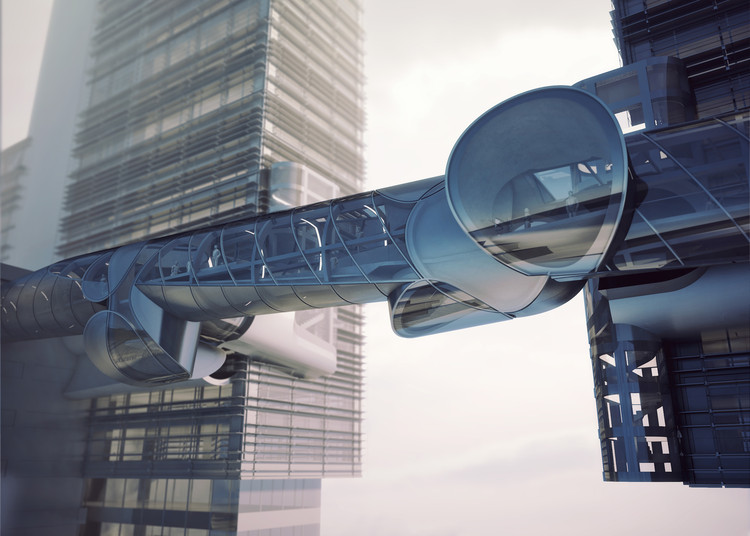
Observation: Komplettlösung: Tipps & Tricks — so löst ihr alle Rätsel!
Sobald sich die Situation normalisiert hat, kommt Emma zu Sinnen und stellt fest, dass die Luke zum Universal-Modul immer noch nicht funktioniert. Sie möchte eine weitere Systemanalyse, wofür ihr euch Modul EAS-03 anschaut und ihr von den defekten Rumpfkontakten berichtet.
Eure nächste Aufgabe ist die Reparatur der Kontakte, weshalb ihr die Station verlassen müsst. Das Spiel wechselt automatisch zu den Kameras in EAS-09, wo ihr euch in eure Sphere begebt. Damit ihr mit dieser überhaupt im Weltraum rumschweben dürft, benötigt ihr ein Update. Laut Emma befindet es sich in EAS-11, weshalb ihr durch die Luke an der Seite beziehungsweise hinter dem blauen Tisch fliegt.
Ihr seht sogleich zwei Raumanzüge und dahinter an der Seitenwand drei bunte Dokumente: Sphere Script A, Sphere Script B und Sphere Compiler Ihr müsst sie alle drei scannen und könnt noch den am blauen Rand angepinnten Zettel mit dem Sphere Upgrade Procedure anschauen.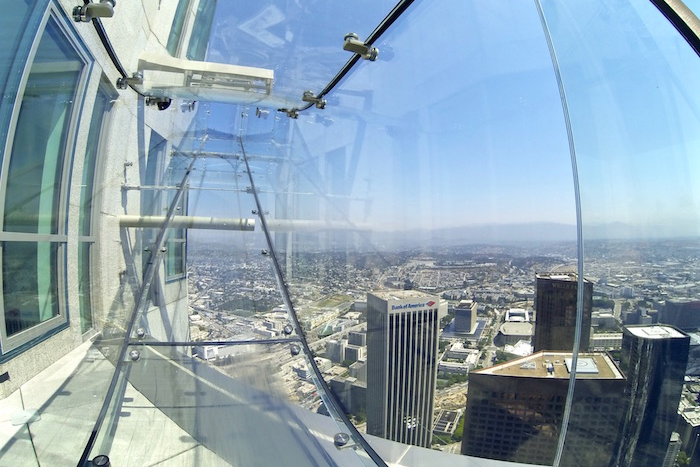
Danach müsst ihr die ersten drei Dokumente zu einem neuen zusammenfügen, wofür ihr euer SamOS aufruft. Wählt oben den zweiten Reiter, um die in eurem Speicher (Memory Core) vorhandenen Dokumente abzurufen, und kombiniert die Einträge 49, 53, 58 und 72. Damit ist das Update beendet und ihr könnt zur Exit-Luke am anderen Ende von EAS-11 schweben. An der Seite hängt ein blau leuchtender Bildschirm, über den ihr zuerst die interne Luke (Internal Hatch) schließt, den Druck senkt (Depress) und die äußere Luke (External Hatch) öffnet.
Verlasst die Station und steuert nun das Modul EAS-03 von außen an. Dazu müsst ihr einfach nach „unten“ fliegen beziehungsweise an den einzelnen EAS-Modulen vorbei. Emma gibt euch Rückmeldung, sobald ihr euch in der Nähe des Zieles befindet. Schaut euch nun um und sucht nach einer Wand mit der Aufschrift EAS-03.
An der einen Seite sollte ein kleines, blau leuchtendes Kästchen mit der Bezeichnung EAS-03 Hatch Clamps kleben. Dieses klickt ihr an, woraufhin eine neue Anzeige mit den Zahlen eins bis acht erscheint. Ihr müsst nacheinander die drei roten Ziffern 2, 4 und 8 anklicken und jeweils das zugehörige Servo-System korrekt einrichten.
Dieses klickt ihr an, woraufhin eine neue Anzeige mit den Zahlen eins bis acht erscheint. Ihr müsst nacheinander die drei roten Ziffern 2, 4 und 8 anklicken und jeweils das zugehörige Servo-System korrekt einrichten.
Haltet hierfür die Taste zum Öffnen der Schelle (Open Clamp) gedrückt, bis ihr das Servo bedienen sollt (Actuate Servo). Nun müsst ihr eine zweite Taste gedrückt halten, ohne die andere loszulassen (wichtig!). Erst wenn ihr laut Anzeige das Servo stoppen (Stop Servo) sollt, löst ihr die zweite Taste und abschließend die erste, sobald die Anweisung zum Schließen der Schelle (Close Clamp) angezeigt wird.
Emma bittet euch nun erneut, den Schaden an der Station zu begutachten. Dazu schwebt ihr zunächst zurück nach „oben“ beziehungsweise an den EAS-Modulen vorbei, bis ihr die zerstörten Solarzellen (Solar Array) erreicht. Berichtet ihr und sie bittet euch, den Russen- und den China-Arm zu untersuchen.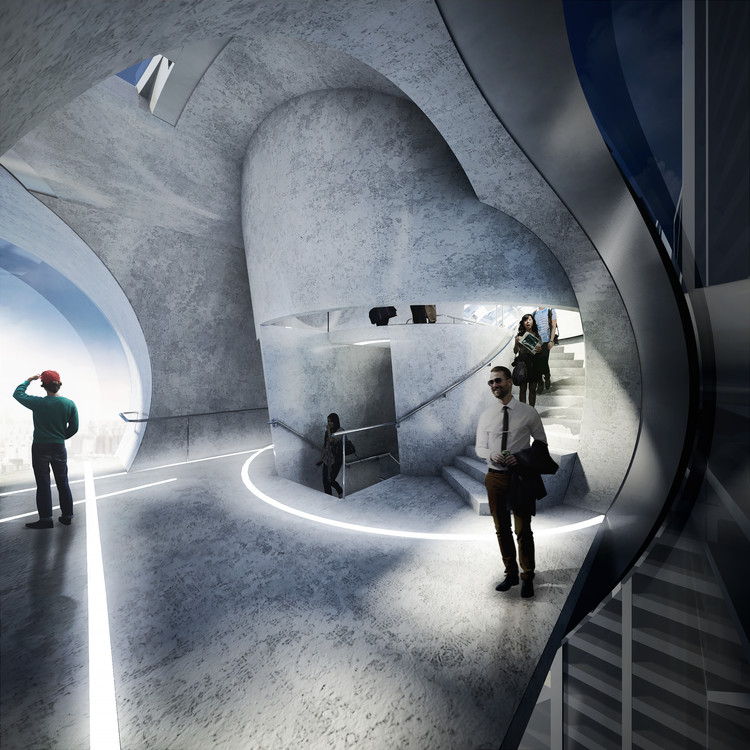
Dieser Job kann nervtötend sein, weil ihr auf den ersten Blick keinerlei Anhaltspunkte darüber habt, wonach ihr suchen sollt. Jedenfalls ist die ganze Station an mehreren Stellen eingedellt und angekratzt. Jedoch müsst ihr eine ganz spezielle Stelle finden, damit Emma zufrieden ist – und zwar eine, die ihr bereits zuvor entdeckt habt.
Dazu steuert ihr die Module der Russen an, die parallel zu jenen von EAS verlaufen. Ihr erkennt sie anhand der Bezeichnung RUS und der weiß-blau-rot gestreiften Flagge, die an den Modulen abgebildet sind. Seht ihr hingegen ein CN oder eine rote Flagge mit gelben Sternen, dann habt ihr den Arm der Chinesen vor Augen.
Begebt euch zum Ende des russischen Arms, bis ihr RUS-07 erreicht. Ihr erkennt das korrekte Modul auch anhand der grauen und beigefarbenen Tanks, die an der Außenhülle angebracht sind. Wenn ihr euch dort den Rand der weißen Wand anschaut, dann solltet ihr auf einen schwarzen Fleck stoßen. Berichtet Emma davon, damit ihr zurück in die Station kehren dürft. Hierfür steuert ihr die geöffnete Luke von Modul EAS-11 an, das an der Seite des EAS-Arms heraus ragt.
Berichtet Emma davon, damit ihr zurück in die Station kehren dürft. Hierfür steuert ihr die geöffnete Luke von Modul EAS-11 an, das an der Seite des EAS-Arms heraus ragt.
Im Inneren müsst ihr wieder den blauen Bildschirm anklicken und die Prozedur von vorne umkehren. Sprich: Schließt die externe Luke (External Hatch), erhöht den Druck (Repress) und öffnet die innere Luke (Internal Hatch). Kehrt zurück zu Emma, indem ihr einfach per SamOS zu den Kameras von EAS-03 schaltet.
UC-01 erreichen
Wenn ihr Emma von Kamera A anvisiert, dann seht ihr hinter ihr die Luke zu Universal beziehungsweise der Zentrale UC-01. Ihr müsst sie aufschließen, indem ihr wie schon einmal zuvor den Kasten mit dem roten Licht anklickt und die Verbindung L3: EAS Hatch Unlock einrichtet. Anschließend dürft ihr euch kurz zurück lehnen und beobachten, wie euch Emma nach UC-01 trägt.
Vor Ort stoßt ihr leider auf eine Leiche und werdet von einem überlebenden Mitglied kontaktiert: Mae Morgan. Wartet das Gespräch ab, bis ihr neue Anweisungen erhaltet.
Wartet das Gespräch ab, bis ihr neue Anweisungen erhaltet.
Mae berichtet von einem Problem in UN-3, weshalb ihr auf Geheiß von Emma die Stationsalarme checken sollt. Dies funktioniert ebenfalls über das SamOS, wo euch nun ganz oben ein neuer Reiter mit der Bezeichnung Station Alerts zur Verfügung steht. Sobald ihr die Funktion anklickt, solltet ihr fünf Kästchen sehen: ein graues und vier rote. Das erste rote spricht eine Warnung bezüglich eines Kühlnetzwerks (Coolant Network) in UN-03 aus. Berichtet deshalb Emma davon, woraufhin ihr euch die Sache natürlich genauer anschauen sollt.
Observation: a method of research in psychology
Observation in psychology is a descriptive psychological research method, which consists in purposeful and organized perception and registration of the behavior of the object under study. Observation is a purposeful, organized and in a certain way fixed perception of the object under study.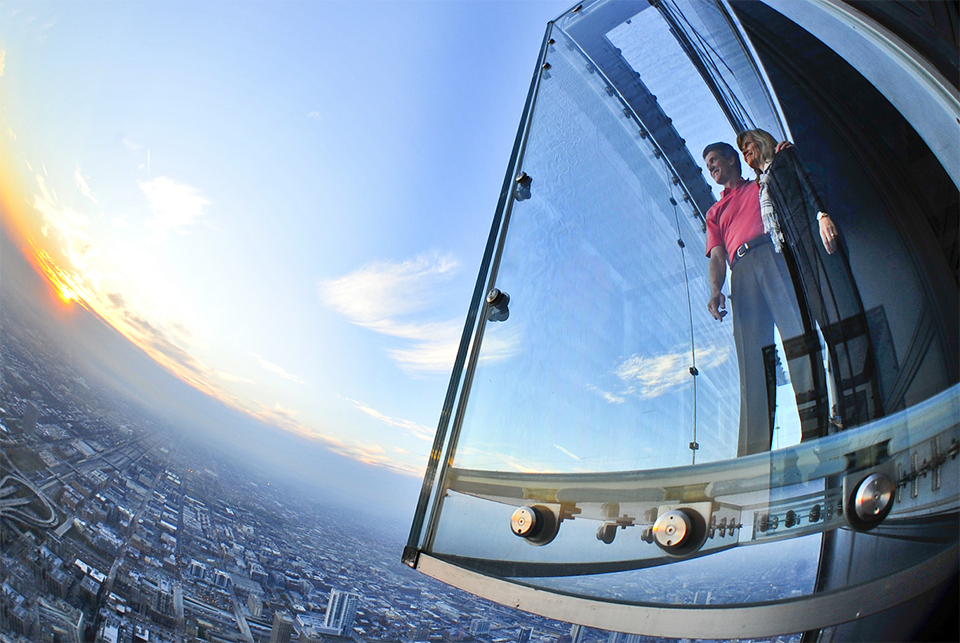 In observation, phenomena are studied directly under the conditions in which they occur in real life.
In observation, phenomena are studied directly under the conditions in which they occur in real life.
Where applicable
Together with introspection, observation is considered the oldest psychological method. Scientific observation has been widely used since the end of the 19th century in areas where the fixation of the characteristics of human behavior in various conditions is of particular importance — in clinical, social, educational psychology, developmental psychology, and since the beginning of the 20th century — in labor psychology. Surveillance is used when it is either impossible or inadmissible to interfere with the natural course of the process.
Types of observation
Observation as a research method in psychology can be different. It can be conscious and not, external and internal, continuous and selective, systematic and not. See →
Features of the method
Observation is used where the intervention of the experimenter will disrupt the process of human interaction with the environment. This method is indispensable when it is necessary to obtain a complete picture of what is happening and reflect the behavior of individuals in its entirety.
This method is indispensable when it is necessary to obtain a complete picture of what is happening and reflect the behavior of individuals in its entirety.
The main features of the observation method are:
- direct connection between the observer and the observed object;
- partiality (emotional coloring) of observation;
- the complexity (sometimes — the impossibility) of repeated observation.
In the natural sciences, the observer, as a rule, does not influence the process (phenomenon) being studied. In psychology, there is a problem of interaction between the observer and the observed. If the subject knows that he is being observed, then the presence of the researcher influences his behavior. The limitations of the method of observation gave rise to other, more «perfect» methods of empirical research: experiment and measurement. See Druzhinin V.N. Experimental psychology. — St. Petersburg. 2000 and Pros and cons of the method of observation
Observation object
Observation objects are various features of behavior. The objects of research can be:
The objects of research can be:
- Verbal behavior, including content, length and intensity of speech,
- Non-verbal behavior — expression of the face, eyes, body, expressive movements, etc.,
- Movement of people — distance between people, physical influences (touches, pushes, blows, etc.).
That is, only that which can be objectively registered can act as an object of observation. Thus, the researcher does not observe the properties of the psyche, he registers only those manifestations of the object that are available for fixation. And only on the basis of the assumption that the psyche finds its manifestation in behavior, the psychologist can build hypotheses about mental properties, based on the data obtained during observation.
How to conduct observations
The results of observations carried out for research purposes, as a rule, are recorded in special protocols. It is good when the observation is carried out not by one person, but by several, and then the obtained data are compared and generalized (by the method of generalizing independent observations).
When using the observation method, the following requirements must be observed as fully as possible:
- Preliminarily plan an observation program with the highlighting of the most important objects and stages of observation.
- The observations made must not affect the natural course of the phenomenon under study.
- It is expedient to observe the same mental phenomenon on different persons. Even if the object of study is a specific person, it can be better and deeper to know by comparing with others.
- Observation must be repeated, and in the study of personality — systematic. It is important that it be successive, that is, repeated observations take into account the information obtained from previous observations.
Stages of observational research
- Definition of the object of observation, object, situation.
- Select how to monitor and record data.
- Create an observation plan.
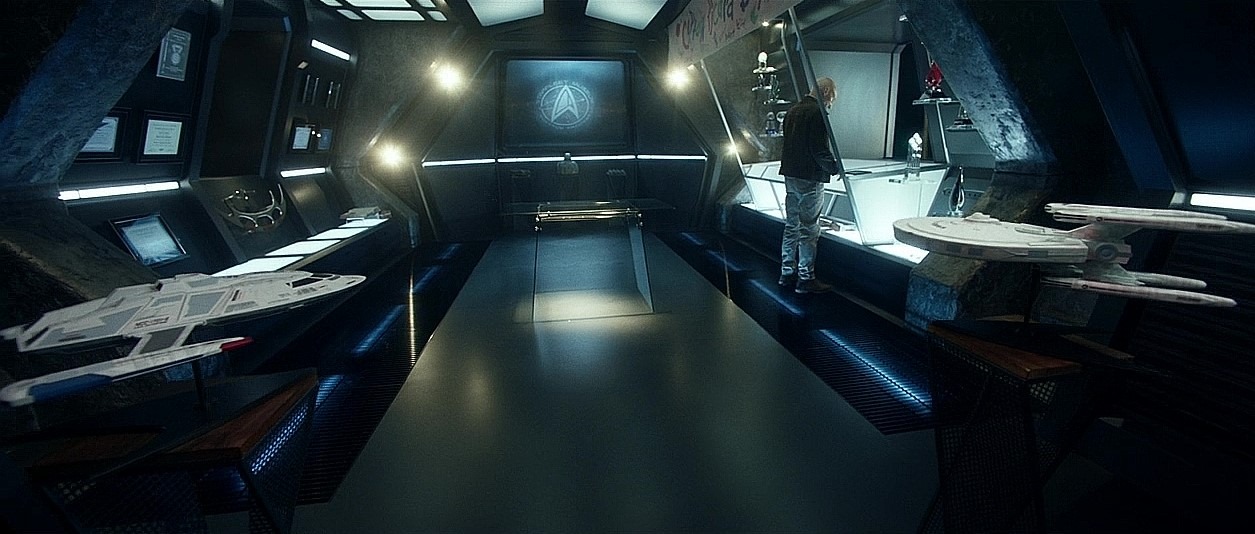
- Select the result processing method.
- Observation itself.
- Processing and interpretation of received information.
Means of observation
Observation can be carried out directly by the researcher, or by means of observation devices and fixing its results. These include audio, photo, video equipment, special surveillance cards.
Observation is opposed to experiment. This opposition is based on two assumptions:
- Passivity of the observer — the observer does not change the surrounding reality.
- Immediacy — the observer records what he sees in the protocol.
APA Code of Ethics and Surveillance
The American Psychological Association’s Code of Ethics, or APA, permits surveillance under certain rules and precautions. Here is some of them:
- If the research is conducted in a public place, it is not considered necessary to obtain the informed consent of the participants.
 Otherwise, you must obtain their consent.
Otherwise, you must obtain their consent.
- Psychologists must do everything possible to avoid causing harm to research participants, and if harm cannot be avoided, reduce the perceived harm.
- Psychologists must keep invasion of privacy to a minimum.
- Psychologists do not disclose confidential data about their research participants.
Observation (psychology) | it’s… What is Observation (Psychology)?
This term has other meanings, see Observation.
Observation is a descriptive psychological research method, which consists in purposeful and organized perception and registration of the behavior of the object under study. Observation is an organized, purposeful, fixed perception of mental phenomena with the aim of studying them under certain conditions.
Contents
|
General information
Together with introspection, observation is considered the oldest psychological method. Scientific observation has been widely used since the end of the 19th century in areas where the fixation of the characteristics of human behavior in various conditions is of particular importance — in clinical, social, educational psychology, developmental psychology, and since the beginning of the 20th century — in labor psychology.
Observation is used where the intervention of the experimenter will disrupt the process of human interaction with the environment. This method is indispensable when it is necessary to obtain a complete picture of what is happening and reflect the behavior of individuals in its entirety.
The main features of the observation method are: — direct connection between the observer and the observed object; — partiality (emotional coloring) of observation; — the complexity (sometimes — the impossibility) of repeated observation. Under natural conditions, the observer, as a rule, does not influence the process (phenomenon) being studied. In psychology, there is a problem of interaction between the observer and the observed. If the subject knows that he is being observed, then the presence of the researcher influences his behavior. The limitations of the method of observation gave rise to other, more «perfect» methods of empirical research: experiment and measurement [1] .
Subject of observation
- Verbal behavior
- Speech content
- Length of speech
- Speech intensity
- etc.
- Non-verbal behavior
- Expression of the face, eyes, body,
- Expressive movements
- etc.
- Movement of people
- Distance between people
- Physical effects
- Touch
- Jolts
- Blows
- etc.
Etc.
That is, only that which can be objectively registered can be the object of observation. Thus, the researcher does not observe the properties of the psyche, he registers only those manifestations of the object that are available for fixation. And only on the basis of the assumption that the psyche finds its manifestation in behavior, the psychologist can build hypotheses about mental properties, based on the data obtained during observation.
Means of observation
Observation can be carried out directly by the researcher, or by means of observation devices and fixing its results. These include audio, photo, video equipment, special surveillance cards.
These include audio, photo, video equipment, special surveillance cards.
Classification of observations
An observation is a purposeful, organized and in a certain way fixed perception of the object under study. The results of fixing the observation data are called the description of the object’s behavior. Surveillance is used when it is either impossible or inadmissible to interfere with the natural course of the process. It can be: 1. Direct and indirect, 2. External and internal, 3. Included (which can be open and closed) and not included, 4. Direct and indirect, 5. Continuous and selective (according to certain parameters), 6. Field (in everyday life) and laboratory.
According to systematicity, they distinguish
- Non-systematic observation , in which it is necessary to create a generalized picture of the behavior of an individual or a group of individuals under certain conditions and the goal is not to fix causal dependencies and give strict descriptions of phenomena.
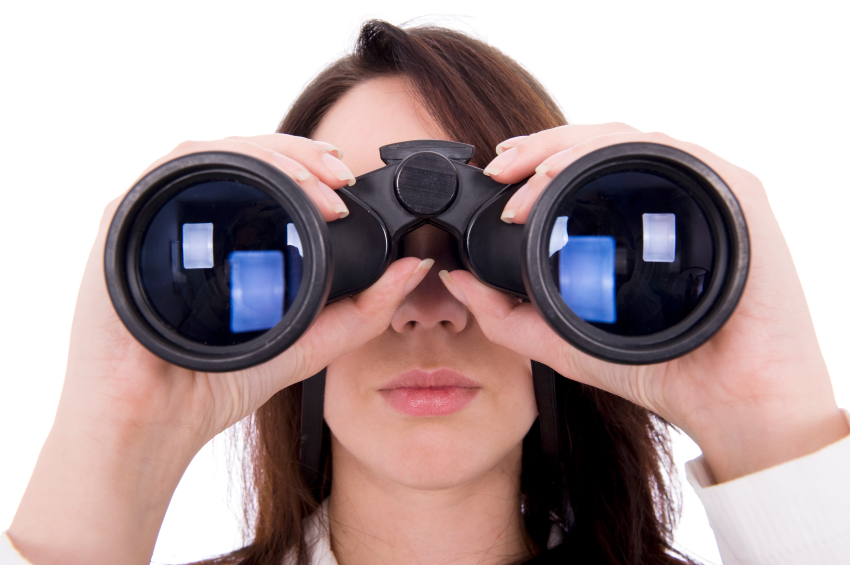
- Systematic observation , carried out according to a certain plan and in which the researcher registers behavioral features and classifies environmental conditions.
Non-systematic observation is carried out during field research (used in ethnopsychology, developmental psychology, social psychology). Result: creation of a generalized picture of the behavior of an individual or a group under certain conditions. Systematic monitoring is carried out according to a specific plan. Result: registration of behavioral features (variables) and classification of environmental conditions.
Observation is opposed to experiment. This opposition is based on two provisions:
- Passivity of the observer — the observer does not change the surrounding reality.
- Immediacy — the observer records what he sees in the protocol.
By fixed objects
- Continuous observation . The researcher tries to fix all the features of behavior.

- Sample observation . The researcher fixes only certain types of behavioral acts or parameters of behavior [2] .
According to the form of observation
- Conscious observation
- Unconscious inner observation
- Unconscious external observation
- Environmental monitoring
Conscious observation
During conscious observation the observed person knows that he is being observed . Such observation is carried out in the contact of the researcher with the subject, and the observed is usually aware of the research task and the social status of the observer. However, there are cases when, due to the specifics of the study, the observed person is informed of other than the original goals of observation. The need for such actions gives rise to ethical problems, including those regarding the conclusions drawn.
This form of observation is chosen on the basis of expediency, that is, when its use is justified by the objectives of the study, since it has significant drawbacks.
Disadvantages: the influence of the observer on the behavior of the observed, because of this, the results can only be considered in relation to the situation in which they were obtained. Several observations need to be made.
Peculiarities
The observer directly affects the actions and behavior of the observed, which, if the observation is incorrectly set up, can greatly affect its results. Observed subjects, for psychological reasons, may try to pass off false behavior as their usual behavior, or simply become embarrassed and give free rein to emotions. The situation when the subject is under observation may turn out to be close to stressful for him, and the results of such observation cannot be extended, for example, to his daily life. Also, the actions of both the observer and the observed can be affected by the degree of familiarity with each other.
The specificity of situations in which direct (conscious) observation takes place leads to the fact that it is very difficult to correctly generalize the conclusions from such observations to other situations, and not only to the specific situation in which the observation procedure took place.
Unconscious internal observation
In unconscious internal observation the observed subjects are unaware that they are being observed, and the researcher-observer is inside the observation system, becomes part of it (for example, when a psychologist infiltrates a hooligan group and does not report the purpose of his infiltration in order to obtain the most objective information about its activities).
A classic example of the use of unconscious internal observation
This form of observation was especially widely used in the second half of the 20th century by psychologists in the USA. The use of this method caused (and still causes) discussions regarding the admissibility of such studies. One of the most famous cases of its use can be considered the study of Leon Festinger (Festinger et al., 1956), who developed the theory of cognitive dissonance.
To test his theory, at the turn of the 1940s and 1950s, he and a group of observers joined a religious group for several weeks, in which they predicted a specific date for the end of the world (which was to come in a few weeks). The end of the world did not follow, and the researchers received confirmation of the theory of cognitive dissonance, as most of the group members began to convince themselves that their activities prevented a catastrophe (J. Goodwin, 2004) [3] [4] .
The end of the world did not follow, and the researchers received confirmation of the theory of cognitive dissonance, as most of the group members began to convince themselves that their activities prevented a catastrophe (J. Goodwin, 2004) [3] [4] .
The observer is in contact with the observed subjects, but they are not aware of his role as an observer.
This form of observation is especially suitable for studying the social behavior of small groups, while the presence of the observer is considered natural, and the fact that his role is to observe, being unknown to the observed subjects, does not affect their actions. This form of observation also raises some ethical questions about the limits of its applicability, since the psychologist sometimes has to infiltrate the group by deception or hiding the truth.
Disadvantage: difficult to record results; the observer may be involved in a conflict of values.
Features
The fact that an observation is taking place does not affect the observed subjects due to the fact that they do not know about it. Also, the observer gets a wide scope for obtaining information due to the possibility of direct contact with the observed subjects.
Also, the observer gets a wide scope for obtaining information due to the possibility of direct contact with the observed subjects.
However, the observer may have difficulty recording the results directly, also because direct recording may unmask the observer. Also, the observer, in close contact with the observed, may lose neutrality and adopt the value system of the studied group. It is also possible that the value system of this group and the value system that the observer adheres to (the so-called «conflict of norms»).
Unconscious external observation
In unconscious external observation , the observed subjects do not know that they are being observed, and the researcher conducts his observations without entering into direct contact with the object of observation (for example, the observer can be hidden from the observed behind a one-sidedly transparent wall).
This form of observation is convenient because the researcher does not constrain the behavior of the observed and does not provoke acts of their behavior that would correspond to the goals of his research, that is, it allows you to collect fairly objective data about people’s behavior.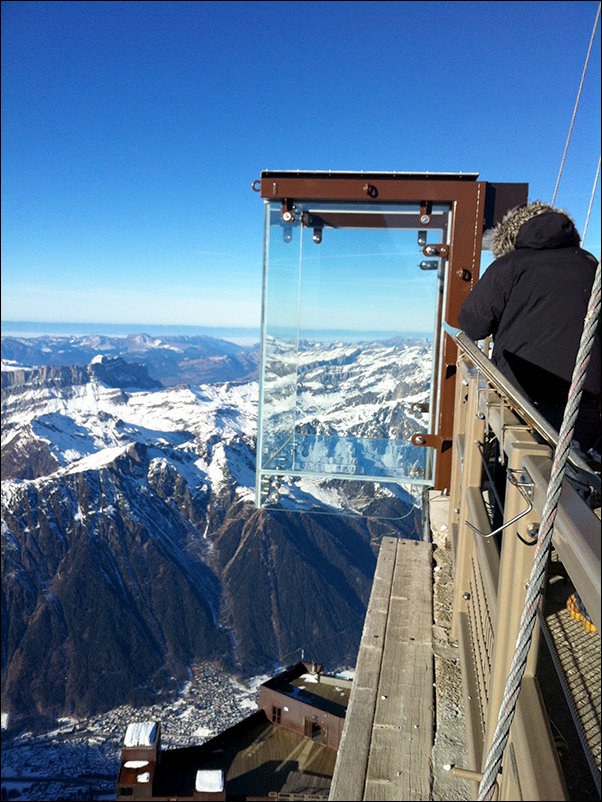
Features
With this form of observation, the presence of the researcher as an observer is not fixed by the observables, thereby reducing the impact on the naturalness of their actions. It is also possible to use technical and other means to facilitate the recording of data and the progress of the study. Another incomparable plus is that a tired observer can be quietly replaced by another observer.
However, at the same time, the observer is limited in his actions by the place of observation, he can only have access to a part of the context situation in which behavioral acts are performed, he cannot influence unforeseen events without thereby violating the course of the study.
Observation of the environment
In this form of observation the researcher studies the environmental conditions of the observed that influence his behavior . He tries to draw conclusions about how external factors determine the actions of an individual or a group of individuals [5] .
APA Code of Ethics and Surveillance
The American Psychological Association (APA) Code of Ethics permits surveillance provided that certain rules and precautions are followed. Here are some of them:
- If the research is conducted in a public place, obtaining informed consent from the participants is not considered necessary. Otherwise, you must obtain their consent.
- Psychologists must do everything possible to avoid causing harm to research participants, and if harm cannot be avoided, reduce the perceived harm.
- Psychologists must keep invasion of privacy to a minimum.
- Psychologists do not disclose confidential data about their research participants.
Stages of observational research
- Definition of the object of observation, object, situation.
- Select how to monitor and record data.
- Create an observation plan.
- Select the result processing method.
- Observation itself.
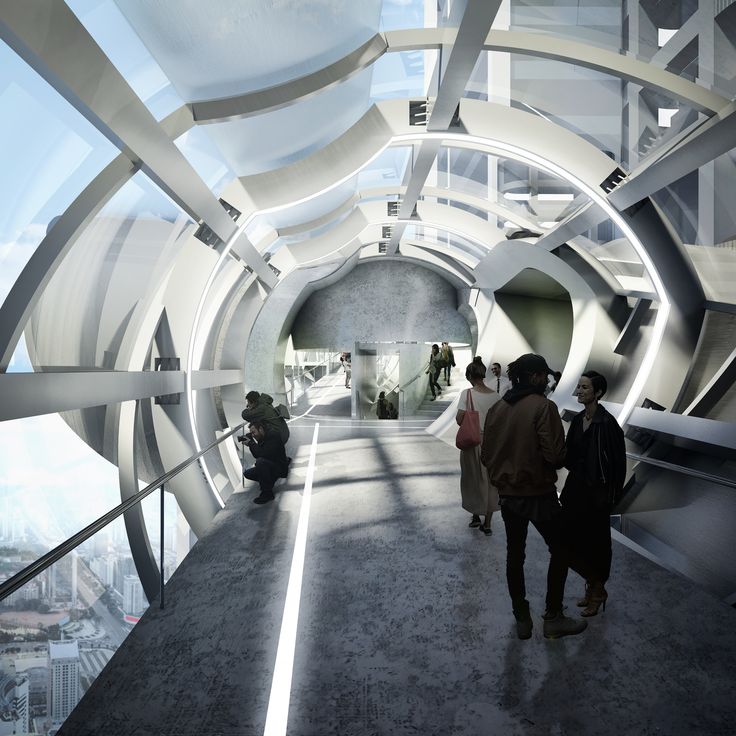
- Processing and interpretation of received information.
Pros and cons
Advantages of the method of observation
- Observation allows you to directly capture and record acts of behavior.
- Observation allows you to simultaneously capture the behavior of a number of persons in relation to each other or to certain tasks, objects, etc.
- Observation allows you to conduct research regardless of the readiness of the observed subjects.
- Observation makes it possible to achieve multidimensional coverage, that is, fixation on several parameters at once — for example, verbal and non-verbal behavior
- Efficiency of obtaining information
- Relatively cheap method
Shortcomings of the method of observation
- Departure from the purpose of observation (Obtaining facts that do not correspond to the objectives of the study)
- Past research experience influences subsequent observations [6]
See also
- Observation
- Experimental psychology
Notes
- ↑ See: Druzhinin VN Experimental psychology.


 1 Distinguish
1 Distinguish